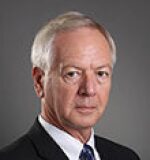As I write the introduction to this year’s Coiled Tubing feature, I am reflecting on a couple of recent events in my SPE life.
The first was the announcement that the Society of Petroleum Engineers (SPE) and the American Association of Petroleum Geologists are no longer pursuing a merger. It wasn’t the merger notification that caught my eye but the drop in SPE membership from 99,175 in 2015 to the current total of 66,020. In addition, a point was raised in the announcement about attracting and retaining young members.
The second event was being fortunate enough to attend the SPE/Intervention and Coiled Tubing Association (ICoTA) Conference in The Woodlands, Texas, in person following a 2-year in-person hiatus. There was an energy about the conference, where people were glad to be spending time with one another and simply networking, sharing ideas, and catching up and not through a computer screen. The Intervention Technology Award, presented by ICoTA each year, had 22 submissions with four finalists. I will leave the reader to research the winner. This is the largest number of submissions in the history of the award. Engineers enjoy solving problems and developing solutions. These submissions reflect 22 problems, or challenges, addressed and solved by bringing new solutions to bear.
So, my reflection on these two events raises the question: does one of these provide insight about the other?
In this year’s feature are two case histories and an equipment-development paper, all of which are, by accident rather than design, from operations undertaken in the Gulf States. Each, in its own way, exemplifies the engineering decisions and balances that must be weighed to provide the best solution within limiting parameters and the considerable effort this may take. These are not compromises, as is often talked about. Compromise implies that something has been given up or sacrificed, but, to me at least, that is not the case when a solution is found that achieves the objective while working within limitations. The case histories are for different types of operations, but the engineering similarities are clear.
Much in line with previous years, papers in the recommended additional reading list are on coiled tubing material performance.
Please all continue to stay well and safe.
This Month’s Technical Papers
Coiled Tubing Program Succeeds in Harsh-Environment Tight Gas Wells
Abrasive Jet Perforating Restores Productivity of an Inactive Oil Producer
New String Deployment Concept Extends Operational Limits for Megareach Interventions
Recommended Additional Reading
SPE/ICoTA 208996 Coiled Tubing Premature Failure—The Effects of Pressure and Strain by Jorge Martin Bunge, Tenaris, et al.
SPE/ICoTA 209019 Wellbore Abrasion Comparison With High-Strength Coiled Tubing—A Case Study by Garry McClelland, Global Tubing, et al.

Alex Crabtree, SPE, is a principal engineer with Oceaneering International based in Houston. He has more than 39 years of experience in the upstream oil and gas industry. Crabtree holds a BS degree in mechanical engineering. He has worked in Southeast Asia, the Middle East, Europe, North America, and South America, both onshore and offshore. Crabtree previously worked with an exploration and production operating company and within the oilfield-services-company sector, holding various engineering and management posts in research and development, field operations, downhole-tool design, and technology implementation. He has authored several SPE papers and is a past program-committee chairperson for various SPE conferences and SPE Applied Technology Workshops. Crabtree has been a chairperson for the SPE Well Integrity Technical Section, was an SPE Distinguished Lecturer in 2001–02, and is a member of the JPT Editorial Advisory Board.

